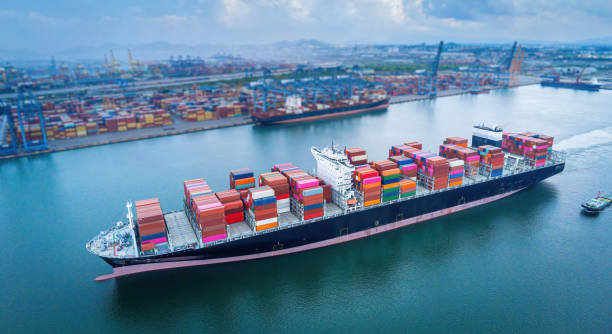For developers who need to devise tools for their clients who want to track the progress of a ship, or to monitor the activity in a particular area, this is the place to find useful recommendations.
What developers need is a good vessel traffic information software as a basis to fulfil their job: ease down processes for their clients in the shipping industry.

There are a number of different ways to get access to ship tracking data: using a satellite tracking system, a radar tracking system, or an AIS tracking system. But these methods can be expensive, inaccurate and time-consuming. Vessel Traffic Information API is a tool that allows to see the movements of ships in real-time integrating the three above mentioned methods and optimizing results.
It`s an easier way to get access to ship tracking up-to-date data, from a ship’s position, speed, route, heading, cargo, crew, history, and more. This means that one can get accurate, up-to-date information about a ship’s location and movements without having to spend time or money on expensive equipment or software. And best of all, it’s easy to use – just sign up for an account and put the name of the ship you want information about in the search box.
This API is ideal for maritime companies that need to track the movement of vessels, making sure of safety and security, both for the vessel and the cargo, as well of course for the crew. It can also be used to monitor the activity in a particular area and even to predict the due date and time for arrival at a certain harbor or its destination.
Why Is This API Necessary?
The Vessel Traffic Information API is a simple but powerful tool that allows to get real-time information about vessels around the world. This data can be used to track vessels in real-time or get historical data on vessel movements. It guarantees accuracy and efficiency, and the easiness to be integrated in any system and application. It`s the perfect solution for everyone in the maritime trading activity.
Vessel Traffic Information API gives information about all globally live on board vessels or by the range of area. It can provide the list of all globally live on board vessels or by range of area or individual ship detail info.
The application has three endpoints: GET VESSEL DATA BY IMO CODE, GET CURRENT ROUTE BY IMO CODE or GET POSITION. The user must first choose the necessary endpoint and then insert the ship code to get the needed data, in no time and with the reliability of an efficient tool.
How Does It Work?
Counting on a subscription on Zyla API Hub marketplace, just start using, connecting and managing APIs. Subscribe to Vessel Traffic Information API by simply clicking on the button “Start Free Trial”. Then meet the needed endpoint and simply provide the search reference. Make the API call by pressing the button “test endpoint” and see the results on display. The AI will process and retrieve an accurate report using this data.
Vessel Traffic Information API examines the input and processes the request using the resources available (AI and ML). In no time at all the application will retrieve an accurate response.
By choosing an endpoint in the API and then inputting the identification number of the vessel, the software will output a full report with all the necessary information. In this case the endpoint is GET POSITION and the vessel is 9449120. The response will look like this:
{
"status": 200,
"success": true,
"message": "IMO Code 9449120 is valid",
"data": {
"position_received": "2023-03-31 15:48 LT UTC7 minutes ago",
"vessel_local_time": "2023-03-31 15:48 LT UTC",
"area": "WAFR - Gulf of Guinea",
"current_port": "-",
"latitude_longitude": "3.3737° / 6.645812°",
"navigational_status": "Underway using Engine",
"speed_course": "12.2 kn / 119 °",
"ais_source": "Terrestrial AIS"
}
}

